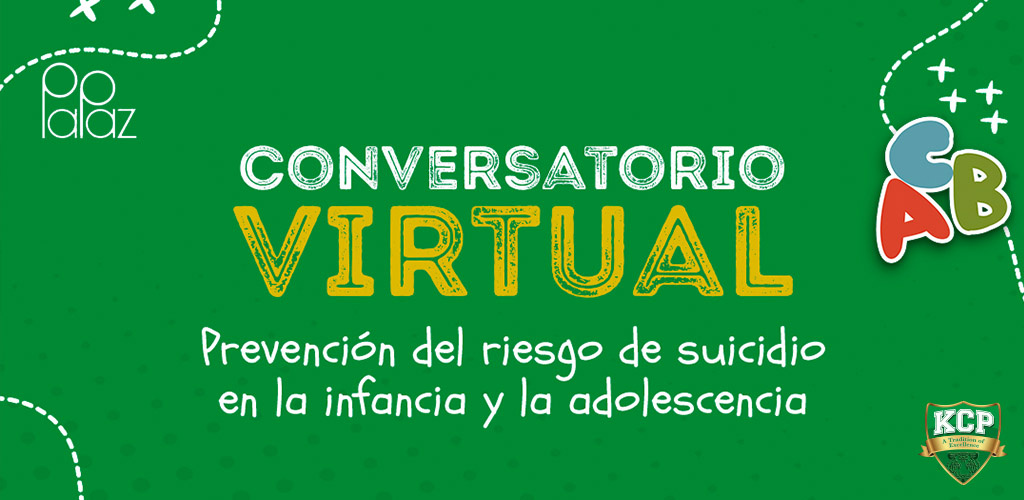
Red PaPaz: Conference on suicide prevention
We want to share with our community this online conference from Red PaPaz with expert advice on suicide prevention, addressed to families, schools and communities to help build protective environments against this rising problem that is affecting girls, boys, and teenagers all over the world.
Read More
Feria Escudos del Alma 2019
Combarranquilla invita a la comunidad educativa y a padres de familia de Elemental y Secundaria a participar en esta importante feria. A continuación encontrarán el programa del evento.

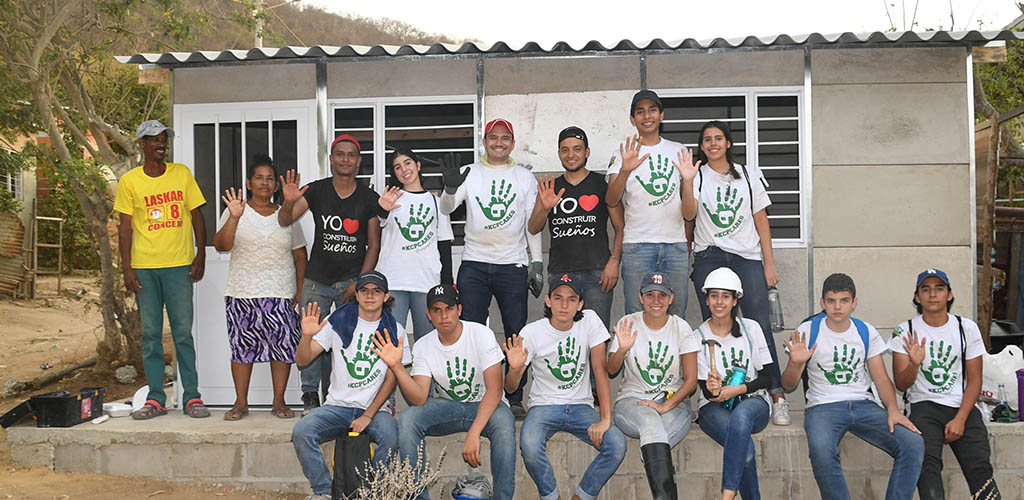
For Families: 5 Tips for Cultivating Empathy
RAISING CARING KIDS, MORAL AND ETHICAL DEVELOPMENT
Source: http://tiny.cc/qdgkez
Empathy is at the heart of what it means to be human. It’s a foundation for acting ethically, for good relationships of many kinds, for loving well, and for professional success. And it’s key to preventing bullying and many other forms of cruelty.
Empathy begins with the capacity to take another perspective, to walk in another’s shoes. But it is not just that capacity. Salespeople, politicians, actors, and marketers are often very skilled at taking other perspectives but they may not care about others. Con men and torturers take other perspectives so they can exploit people’s weaknesses. Empathy includes valuing other perspectives and people. It’s about perspective-taking and compassion.
How can parents cultivate empathy? The following are five guideposts based on research and the wisdom of practitioners.
1. Empathize with your child and model empathy for others.
Children learn empathy both from watching us and from experiencing our empathy for them. When we empathize with our children they develop trusting, secure attachments with us. Those attachments are key to their wanting to adopt our values and to model our behavior, and therefore to building their empathy for others.
Empathizing with our children takes many forms, including tuning in to their physical and emotional needs, understanding and respecting their individual personalities, taking a genuine interest in their lives, and guiding them toward activities that reflect an understanding of the kind of people they are and the things they enjoy.
Children also learn empathy by watching those we notice and appreciate. They’ll notice if we treat a server in a restaurant or a mail carrier as if they’re invisible. On the positive side, they’ll notice if we welcome a new family in our child’s school or express concern about another child in our child’s class who is experiencing one challenge or another.
Finally, it’s important for us to recognize what might be getting in the way of our empathizing. Are we, for example, exhausted or stressed? Does our child push our buttons in a specific way that makes caring for her or him hard at times?
TRY THIS
- Know your child. Ask your child questions. For example, what did you learn today that was interesting? What was the hardest part of your day? How would you most like to spend a day if you could do anything? Do you have a friend that you especially respect? Why do you respect that person?
- Demonstrate empathy for others, including those different from you. Consider regularly engaging in community service or model other ways of contributing to a community. Even better, consider doing this with your child. Express interest in those from various backgrounds facing many different types of challenges.
- Engage in self-care and self-reflection. Try to find time to regularly engage in an activity—whether it’s going for a walk, reading a book, meditating or praying—that can help you avoid being overwhelmed by stress. Reflect and consult with people you trust when you’re having a hard time empathizing with your child.
2. Make caring for others a priority and set high ethical expectations.
If children are to value others’ perspectives and show compassion for them, it’s very important that they hear from their parents that caring about others is a top priority, and that it is just as important as their own happiness. Even though most parents say that raising caring children is a top priority, often children aren’t hearing that message.
TRY THIS
- Keep to a clear message. Consider the daily messages you send to children about the importance of caring. For example, instead of saying “The most important thing is that you’re happy,” you might say “The most important thing is that you’re kind and that you’re happy.”
- Prioritize caring when you talk with other important adults in your children’s lives. For example, ask teachers and coaches whether your children are caring community members in addition to asking about their academic skills, grades, or performance.
- Help your children understand that the world doesn’t revolve around them. It’s vital at times for parents to put children’s concern for others above their happiness, for example, insisting at times that children turn off the TV and help around the house, be polite even when they are in a bad mood, or not dominate the airwaves when they are talking to other children or adults.
3. Provide opportunities for children to practice empathy.
Children are born with the capacity for empathy, but it needs to be nurtured throughout their lives. Learning empathy is in certain respects like learning a language or a sport. It requires practice and guidance. Regularly considering other people’s perspectives and circumstances helps make empathy a natural reflex and, through trial and error, helps children get better at tuning into others’ feelings and perspectives.
TRY THIS
- Have family meetings. Hold family meetings when there are family challenges or conflicts, and in those meetings give children a voice and encourage them to take the perspective of other family members. Listen carefully to your children’s views and ask your children to listen carefully to the views of others.
- Encourage empathy for peers. Ask children about their classmates and other peers. Ask children when they’re in conflicts with peers to consider their peers’ perspectives.
- Reflect on empathy and caring. Notice with your child when you’re together and someone exhibits strong empathy—or shows a lack of empathy—either in your daily life or in a book or on television. Discuss why acts of empathy are important and why lacking empathy can be harmful.
- Discuss ethical dilemmas. Discuss with your child ethical dilemmas that help them appreciate various perspectives, e.g., “Should I invite a new neighbor to my birthday party when my best friend doesn’t like her?” “Should I tell my friend if I know her boyfriend, who is also my friend, cheated on her?”
- Support doing with. Encourage children not just to do service, to “do for” others, but to “do with” others, working with diverse groups of students to respond to community problems.
4. Expand your child’s circle of concern.
We often talk about empathy as a quantity. For example, we speak of children as having a lot of or a little empathy or as lacking empathy entirely. Yet the issue often isn’t whether children can empathize or how much empathy they have. It is who they have empathy for. For most of us, it’s not hard to have empathy for our family members and close friends. It’s also human nature to have empathy for people who are like us in some way. But the real issue is whether children (and adults) have empathy outside that circle. As parents and caretakers, it’s not only important that we model appreciation for many types of people. It’s important that we guide children in understanding and caring for many kinds of people who are different from them and who may be facing challenges very different from their own challenges.
TRY THIS
- Zoom in and out. Help children learn to zoom in, tuning in carefully to others, but also to zoom out, taking in multiple perspectives and people. Use newspaper or TV stories to start conversations with children about other people’s hardships and challenges, or simply the different experiences of children in another country or community.
- Understand those who are different or struggling. Emphasize with your child the importance of really listening to others, especially those people who may seem unfamiliar whom they don’t immediately understand. Encourage children to consider the feelings of those who may be vulnerable, such as a child experiencing some family trouble or an unpopular child. Give children some simple ideas for taking action, like comforting a classmate who was teased.
5. Help children develop self-control and manage feelings effectively.
Often when children don’t express empathy it’s not because they don’t have it. It’s because some feeling or image is blocking their empathy. Often the ability to care for others is overwhelmed, for example, by anger, shame, envy, or other negative feelings.
Helping children manage these negative feelings, as well as stereotypes and prejudices about others, is often what “releases” their empathy.
TRY THIS
- Identify feelings. Name for children their difficult feelings such as frustration, sadness and anger and encourage them to talk to you about why they’re feeling that way.
- 3 steps to self-control. A simple way to help children to manage their feelings is to practice three easy steps together: stop, take a deep breath through the nose and exhale through the mouth, and count to five. Try it when your children are calm. Then, when you see them getting upset, remind them about the steps and do them together.
- Resolve conflicts. Practice with your child how to resolve conflicts. Consider a conflict you or your child witnessed or experienced that turned out badly, and role play different ways of responding. Try to achieve mutual understanding—listening to and paraphrasing each other’s feelings until both persons feel understood. If your child observes you experiencing a difficult feeling and is concerned, talk to your child about how you are handling it.
Support from and input from Ashoka: Innovators for the Public was helpful in producing this work. Special thanks to SUNY Cortland’s Tom Lickona for his contributions to this document.
Read More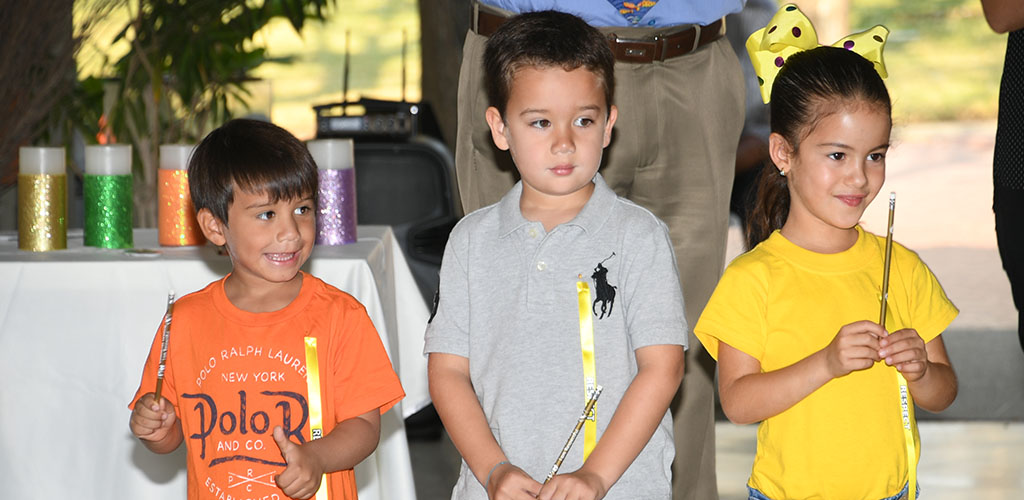
14 Little Ways to Encourage Kindness
By: Kristine Breese
Source: http://tiny.cc/42kydz
These simple ideas teach your children to be nice, generous people, one good deed at a time.
Great thinkers from Martin Luther King Jr. to the Dalai Lama to my daughter, Addison, all have had something to say about the importance of helping others. The civil-rights leader stated, “Life’s most persistent and nagging question is ‘What are you doing for others?'” The soft-spoken spiritual leader called doing good deeds “our prime purpose.” And my 12-year-old put it this way: “Helping feels good because it’s nice for the other person and for you.”
Smart words. And as it turns out, kids are actually hardwired to be considerate and kind. “The desire to help is innate,” says David Schonfeld, M.D., director of developmental and behavioral pediatrics at Cincinnati Children’s Hospital Medical Center. And their sense of doing good develops as they grow. “At first, children like to help others because it helps them get what they want. Next, they do so because they get praise. Finally, they begin to anticipate the needs of others, and it becomes intrinsically rewarding to do nice things for people in their lives.”
Bottom line: Kids want to help. And as parents, it’s our job to nurture and guide a child’s natural inclination to pitch in so it becomes a lifelong habit. “It’s important to be a good role model—children learn to be helpful from watching you,” says Dr. Schonfeld. Try out a few of these simple ways to nudge your kid’s helping gene.
Make helping a family affair.
When a friend gets sick or a local family falls on hard times, grown-ups know what to do. They send flowers, bake casseroles, and pass the collection plate at church. Get your kids involved in these projects. Ask them what they’d like to do to help out, or suggest arranging the bouquet, layering noodles in the lasagna pan, or collecting cans of food. And when you drive over to deliver the gifts, take your kids along. They’ll find out firsthand how good it feels to brighten someone’s day. This is also a great opportunity to talk about being on the other side of the good-karma equation—ask them whether they remember when someone did something nice for them and how it made them feel.
Share the wealth.
Teach your kids to see the abundance all around them and to think of people to share it with. When your rosebush explodes in bloom, invite your child to snip a few buds and take them to her teachers. Is his shelf overflowing with books? Suggest he donate a box to the library or a local family shelter.
Package up leftover soup or cinnamon rolls, and take them to an elderly neighbor.
Teach respect for the earth.
Never litter.
Even if something drops by mistake, make a point to pick it up. And if you see an old newspaper or a used coffee cup left on a park bench, throw it away. It feels good to take care of a mess you didn’t make and weren’t “supposed” to clean up.
Recycle.
How’s this for a double whammy of doing good? Have your child collect and take empty cans and bottles to a recycling center that pays you for what you bring in, then drop the money you make into the donation jar at the supermarket checkout.
The Art of Pitching In
Assign chores.
Kids should understand that a certain amount of helping is requested and required “just because”—just because they’re members of the family, just because they live under the same roof, and just because it’s the right thing to do. So show them where the cat food is and how to clear the dinner table and make their beds. And keep a chore chart to track and reward the completion of their tasks. Your kids will feel great pride in doing their share.
Teach teamwork.
How often have you hosted a playdate and been left with what looks like a scene from the movie Twister: dolls and their tiny clothes strewn everywhere, glue and glitter splattered on tables and rugs, juice cups and crumbs all over? When your child is a guest, make sure she helps clean up before she climbs into the minivan. If the host insists it’s not necessary, say, “Let us pick up three things and then we’ll be on our way.” Putting away a few army men or Legos is a great way to practice the art of pitching in.
Perform small acts of kindness.
If you have a friend who is feeling overwhelmed, ask her what you can do to help her family. I have a friend who told me that the mother of one of her daughter’s friends packed lunches for her little girl when she needed an extra helping hand. This simple gesture meant my friend could have one less daily chore to tackle each day. Plus, her daughter enjoyed some new tasty treats in her lunch box. If you have a friend who can use some assistance, offer to pick up a friend’s kids from school while you get your own to ease her to-do list. If you’re going to the grocery store, ask if she needs anything. Then have your kids pick out a sweet treat for your friend and her family (we like Friendly’s Dessert Cups). This will be a great example of kindness for your kids and help your friend enjoy dessert with her family.
Look on the Bright Side.
Give your kids rose-colored glasses.
Sometimes, it can seem as if bad news is all around us. Point out to your kids the good things that are happening and the good people who are helping others. Cut out newspaper articles about student groups who volunteered to build homes or collect clothes after a natural disaster. This makes your kids feel better about the world they live in and also gets them thinking creatively about ways they can make a difference.
Don’t criticize their efforts.
Yes, you can get the wet towels off the floor faster, sort the laundry better, and pour the milk without spilling it, but if you take over (or critique too much) it leaves your little helpers feeling inept, unskilled—and less likely to offer their services again. If you’re impatient, you can turn a teachable moment into a missed opportunity. “Kids want to help cook dinner, wash the car, and do the dishes, and, sure, they’ll do it slowly and imperfectly at first,” says Dr. Schonfeld. You’re teaching them that they can make a difference at home. Just imagine how good they’ll feel when they step out into the world.
Do Unto Others…
Lighten someone’s load.
Send your child out to meet the mail carrier on the sidewalk before he or she has to climb your steps or walk up the driveway. Offer a fellow grocery shopper help to the car with her bags. Let someone with less stuff go ahead of you in line at the supermarket.
Cheer up a stranger (or a friend).
If you see that your neighbor’s newspaper is always getting soaked by the sprinklers, toss it onto her porch. If the guy who drives your bus has been gone for a few days, ask him how he’s feeling when he returns. Is a friend sad? Give her a hug. Teaching your kids to notice what’s going on in the lives of folks in their own backyard fosters empathy and can inspire them to become keen helpers.
Do something that’s above and beyond the call of duty.
If your neighbors have lost a pet, call and ask whether they’ve found their furry friend. If they haven’t, you and your child can offer to hang up more signs and keep an eye out for their pal.
Give thanks.
Compliment a stranger on her great sweater, say “good morning” to a neighbor, and thank the pizza delivery guy. Sometimes a simple acknowledgment or expression of appreciation is all the boost someone needs to get through the day.
Be a good neighbor.
My family lives in an area that was built in the 1940s as a place where returning WWII veterans could buy a first home, settle down, and start a family. Today, many of the houses are still occupied by their original owner, typically an elderly widow. On our street, there are five such women, and a neat thing has happened. Without anyone’s suggesting it, the immediate neighbors of each of these ladies have taken to rolling their garbage cans in and out of their garage and to the curb and back every Monday (trash day on our street). We recently joined the ranks of the Croydon Avenue trash-can brigade when the husband of our elderly neighbor passed away. The Monday morning after the funeral, Travis, my 10-year-old, said, “Maybe we should get Ann’s cans too.” And so now we do. There’s probably a group that needs help or a problem to be solved in your own neighborhood. So the next time you see something awry, don’t complain. Look at it as an opportunity to get involved. Inspire your kids to find ways to make their corner of the world a brighter place.
Read More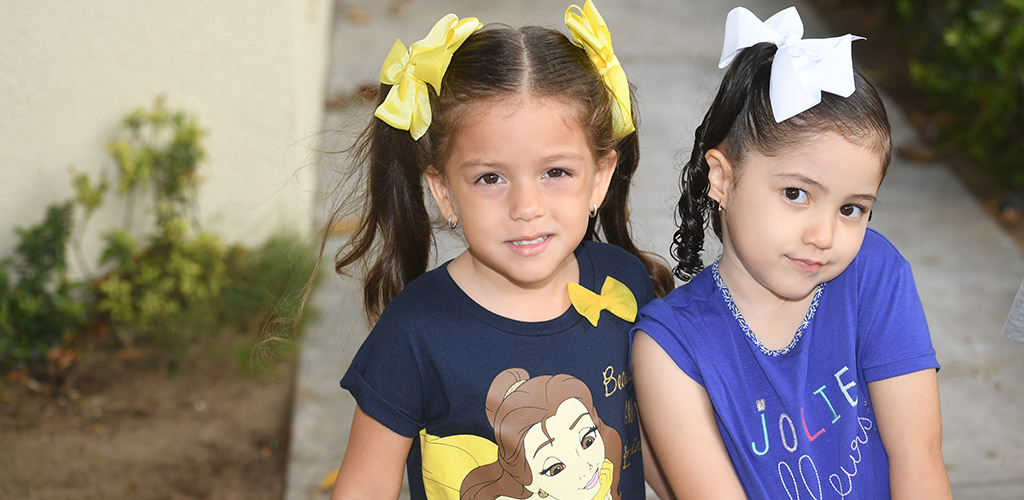
Empathy: How Families Lead with Gratitude and Kindness
By: Marilyn Price-Mitchell, PhD
Source: https://www.rootsofaction.com/empathy-families-children/
If you had to choose between teaching your child empathy or helping her study for tomorrow’s math test, which would you choose?
If you had to choose between raising a kind child or making sure he was fully prepared for next week’s basketball tournament, which would you choose?
Of course, parents shouldn’t have to choose between cultivating empathy and a child’s everyday activities and accomplishments. Yet, this choosing often occurs unconsciously as families focus on daily external successes rather than core internal abilities that foster life success.
Acquired through emotional attachment with other caring human beings, empathy is our ability to recognize, feel, and respond to the needs and suffering of other people.
Why is empathy critical to your child’s development? How do parents lead children toward a caring life? This article explores answers to these questions and provides practical, research-proven ways to contribute to your child’s social-emotional well-being by teaching them empathy, compassion, gratitude and kindness.
Why Empathy is Important to Your Child’s Success
Many parents believe empathy is one of those soft skills, like courage or humility, that are important to healthy development. But according to educational psychologist, Dr. Michele Borba, empathy reigns supreme among social-emotional skills and plays a surprising role in predicting kids’ life-long success.
Borba has studied the role of empathy in children and adolescents for many years. She suggests empathy is the key to raising healthy, thriving children. With over 350 references to neuroscience and developmental research in her book UnSelfie: Why Empathetic Kids Succeed in Our All-About-Me World, Borba not only makes the case for empathy, but also identifies nine teachable habits that foster its development.
When children develop empathy, research shows they thrive in school and life. They also learn to impact their communities in positive, often extraordinary ways.
In my book Tomorrow’s Change Makers, young people spoke about how their greatest teachers not only fostered empathy, but also inspired them to put empathy into action in the world around them. In many cases, they named their parents as those teachers.
As parents, we must ask, “Have we misled children to believe success is achieved through test scores, material wealth, and personal gain alone?” What other ways should we define success?
The Digital Age has given our children more ways to connect with others than ever before, but many researchers are concerned with how social networking and fewer face-to-face relationships may have contributed toward a 48% drop in empathetic concern for others over the past few decades. Studies also link low empathy to increased bullying, narcissism, rigid belief systems, and civic apathy.
As families, we have a moral imperative to rethink how we teach kids to care in a more hurried, complex, and data-driven world. In fact, individual and societal success depends on our ability to do so.
Through parent coaching, empathy is one of eight core abilities I help parents understand and nurture at home. Below are ways you can start today to foster empathy in your child!
12 Ways to Foster Empathy in Your Child
1. Create a caring relationship.
To develop the capacity to feel empathy for others, a child must feel seen, felt, heard, and understood by at least one primary caregiver. Family members who know, appreciate, and respect a child regardless of external accomplishments help that child feel emotionally attached to a caring adult. These kinds of loving relationships increase a child’s ability to care for others. Learn 50 everyday ways to grow happy, caring kids.
2. Listen for understanding.
Active listening is a practice that helps parents and children grow in their understanding of each other. Three skills most often associated with good listening are: 1) Respect the other person, 2) Listen more than you talk, and 3) Always seek understanding. The next time you and your child have difficulty listening, try a simple listening exercise developed by family therapist, Susan Stiffelman.
3. Teach a growth mindset.
Let your child know that empathy is not a fixed trait—that it develops over time. Dr. Michele Borba suggests telling kids: “Empathy can be increased with practice just like your muscles stretch with exercise…. The more you practice, the better you’ll be at understanding another’s thoughts and feelings.” Read Borba’s practical advice on how to nurture empathy.
4. Rethink how kids learn kindness.
It is no surprise that adults feel good about themselves when they show kindness to their children and grandchildren. Not only do good deeds make us feel better, but as David Brooks explained in his article “Nice Guys Finish First,” people who are kind and compassionate are often the most successful. That said, we don’t make children happy when we simply enable them to be receivers of kindness. We heighten their feelings of happiness, improve their well-being, reduce bullying, enrich their friendships, and build peace by teaching them to be givers of kindness. Learn about teaching kindness.
5. Transform gift-giving into lasting family values.
Gift-giving during the holidays, or for other special occasions, can shape children’s lifelong identities. The values your family holds about gift-giving can be turned into powerful lessons that teach compassion, empathy, and kindness. Be proactive about your values as you develop holiday traditions. Include children in conversations about how to give to others. Read more about gift-giving.
6. Instill compassion at home.
Regarded as one of the greatest human virtues by all major religious traditions, compassion is an emotional response and attitude toward others that is deeply empathetic. It enables us to connect to human suffering with care and understanding, acting in ways that brings comfort to those around us. Families instill compassion at home by: 1) Providing opportunities to practice compassion, 2) Helping children understand anger; and 3) Teaching children to self-regulate their emotions. Read more about compassion.
7. Show kids why giving back matters.
Families who demonstrate caring, cooperation, compassion, kindness, service, teamwork, and the importance of getting along with others are powerful empathy-builders. From elementary school through high school, children should evolve through three developmental stages as they take on roles in society: (1) Being responsible citizens; (2) Improving their communities; and (3) Contributing to solve societal problems. Explore these stages and related community service ideas.
8. Expose children to different opinions and worldviews.
When families cultivate curiosity about how individuals and groups of people see the world differently, they expand children’s intellectual, interpersonal, and emotional boundaries. They help children recognize and understand differing perspectives. When challenged to explore prejudices, find commonalities, and glean meaning from what they imagine life would be like to walk in another person’s shoes, children build a greater capacity for empathy.
9. Nurture positive citizenship.
Raising children to become active citizens doesn’t happen by chance. It happens when children 1) Connect with others in need, 2) Confront moral dilemmas, 3) Reflect on their values, 4) Notice how social issues are connected, and 5) Create positive and passionate civic identities. Learn how this developmental process emerges and how adult support is an essential ingredient.
10. Help kids learn from volunteering.
Children gain developmental benefits from participating in community service. Tweens and teens are especially ready to stretch in ways that bring deeper meaning to life. But to do so, they need adult support and encouragement. Learn why taking an interest in your child’s volunteering can help them get the most from their experiences.
11. Lead with empathy.
Family values are reflections of who we are and how we parent. When parents lead with empathy, gratitude, and kindness, children learn to do the same. Learn how to articulate and express your family values so that children understand and learn from them.
12. Discuss money and giving.
Ron Lieber, author of The Opposite of Spoiled: Raising Kids Who Are Grounded, Generous, and Smart about Money, says, “Every conversation about money is also about values. Allowance is also about patience. Giving is about generosity. Work is about perseverance.” The more kids learn about money from an early age, the more they can contribute to family conversations that tap into deep emotions and moral dilemmas. These discussions can help children put themselves in other children’s shoes, help them understand people different from themselves, and provide opportunities for them to give their own earned money to benefit others.
Empathy Infographic
The following infographic was created from the material in this article. Please feel free to copy, print, and share it with others on social media!
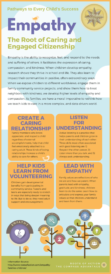

7 Tips for Raising Caring Kids
Source: http://tiny.cc/4piydz
Research in human development clearly shows that the seeds of empathy, caring, and compassion are present from early in life, but that to become caring, ethical people, children need adults to help them at every stage of childhood to nurture these seeds into full development.
We should work to cultivate children’s concern for others because it’s fundamentally the right thing to do, and also because when children can empathize with and take responsibility for others, they’re likely to be happier and more successful. They’ll have better relationships their entire lives, and strong relationships are a key ingredient of happiness. In today’s workplace, success often depends on collaborating effectively with others, and children who are empathic and socially aware are also better collaborators.
Below are a set of guideposts to raising caring, respectful, and ethical children, along with tips for putting them into action. These guideposts are supported by many studies and by the work that our various organizations have conducted over several decades with families across America.
1. Work to develop caring, loving relationships with your kids.
WHY?
Children learn caring and respect when they are treated that way. When our children feel loved, they also become attached to us. That attachment makes them more receptive to our values and teaching.
HOW?
Loving our children takes many forms, such as tending to their physical and emotional needs, providing a stable and secure family environment, showing affection, respecting their individual personalities, taking a genuine interest in their lives, talking about things that matter, and affirming their efforts and achievements.
TRY THIS
Regular time together. Plan regular, emotionally intimate time with your children. Some parents and caretakers do this through nightly bedtime reading or other shared activity. Some build one-on-one time with their children into their weekly schedules rather than leaving it to chance. You might, for example, spend one Saturday afternoon a month with each of your children doing something you both enjoy.
Meaningful conversation. Whenever you have time with your child, take turns asking each other questions that bring out your thoughts, feelings, and experiences. Ask questions such as:
- “What was the best part of your day? The hardest part?”
- “What did you accomplish today that you feel good about?”
- “What’s something nice someone did for you today? What’s something nice you did?”
- “What’s something you learned today—in school or outside of school?”
2. Be a strong moral role model and mentor.
WHY?
Children learn ethical values and behaviors by watching our actions and the actions of other adults they respect. Children will listen to our teaching when we walk the talk.
HOW?
Pay close attention to whether you are practicing honesty, fairness, and caring yourself and modeling skills like solving conflicts peacefully and managing anger and other difficult emotions effectively. But, nobody is perfect all the time. That is why it’s important for us, in fact, to model for children humility, self-awareness, and honesty by acknowledging and working on our mistakes and flaws. It‘s also important for us to recognize what might be getting in the way of our own caring. Are we, for example, exhausted or stressed? Does our child push our buttons in a specific way that makes caring for her or him hard at times? And remember, children will only want to become like us if they trust and respect us. Adults can reflect on whether our children respect us and, if we think they don’t, consider why, and how we might repair the relationship.
TRY THIS
- Service. Regularly engage in community service or model other ways of contributing to a community. Even better, consider doing this with your child.
- Honesty and humility. Talk with your child when you make a mistake that affects them about why you think you made it, apologize for the mistake, and explain how you plan to avoid making the mistake next time.
- Check-in with others. Reflect and consult with people you trust when you’re finding it hard to be caring or to model important ethical qualities like fairness.
Take care of yourself. Whether it’s spending time with a friend, going for a walk, praying or meditating, try to make time to relieve your stress both because it’s important for you and because it will enable you to be more attentive to and caring with others.
3. Make caring for others a priority and set high ethical expectations.
WHY?
It’s very important that children hear from their parents and caretakers that caring about others is a top priority and that it is just as important as their own happiness. Even though most parents and caretakers say that their children being caring is a top priority, often children aren’t hearing that message.
HOW?
A big part of prioritizing caring is holding children to high ethical expectations, such as honoring their commitments, doing the right thing even when it is hard, standing up for important principles of fairness and justice, and insisting that they’re respectful, even if it makes them unhappy and even if their peers or others aren’t behaving that way.
TRY THIS
- A clear message. Consider the daily messages you send to children about the importance of caring. For example, instead of saying to children “The most important thing is that you’re happy,” you might say “The most important thing is that you’re kind and that you’re happy.”
- Prioritize caring when you talk with other key adults in your children’s lives. For example, ask teachers and coaches whether your children are good community members in addition to asking about their academic skills, grades, or performance.
- Encourage kids to “work it out.” Before letting your child quit a sports team, band, or a friendship, ask them to consider their obligations to the group or the friend, and encourage them to work out problems.
4. Provide opportunities for children to practice caring and gratitude.
WHY?
Children need practice caring for others and being grateful—it’s important for them to express appreciation for the many people who contribute to their lives. Studies show that people who engage in the habit of expressing gratitude are more likely to be helpful, generous, compassionate, and forgiving—and they’re also more likely to be happy and healthy.
HOW?
Learning to be grateful and caring is in certain respects like learning to play a sport or an instrument. Daily repetition—whether it’s helping a friend with homework, pitching in around the house, having a classroom job, or routinely reflecting on what we appreciate about others—and increasing challenges make caring and gratitude second nature and develop children’s caregiving capacities. Hold family meetings that give children practice helping to solve family problems such as squabbles between siblings, hassles getting off to school, and making meals more pleasant. Although as parents and caretakers we always need to stand firmly behind key values such as caring and fairness, we can make our home democratic in key respects, asking our children to express their views while they listen to ours. Involving children in making plans to improve family life teaches perspective-taking and problem-solving skills and gives them an authentic responsibility: becoming co-creators of a happy family.
TRY THIS
- Real responsibilities. Expect children to routinely help, for example, with household chores and siblings, and only praise uncommon acts of kindness. When these kinds of routine actions are simply expected and not rewarded, they’re more likely to become ingrained in everyday actions.
- Make caring and justice a focus. Start conversations with children about the caring and uncaring acts they see in their daily lives or on television and about acts of justice and injustice they might witness or hear about in the news, such as a person who stood up for an important cause or an instance of sexism or racism. Ask children how they see these actions and explain why you think these actions are caring or uncaring, just or unjust.
Expressing thanks. Consider making expressing gratitude a daily ritual at dinnertime, bedtime, in the car, or on the subway. Encourage children to express appreciation for family members, teachers, or others who contribute to their lives.
5. Expand your child’s circle of concern.
WHY?
Almost all children empathize with and care about a small circle of families and friends. Our challenge is help children learn to have empathy and care about someone outside that circle, such as a new child in class, someone who doesn’t speak their language, the school custodian, or someone who lives in a distant country.
HOW?
It is important that children learn to zoom in, listening closely and attending to those in their immediate circle, and to zoom out, taking in the big picture and considering the range of people they interact with every day. Children also need to consider how their decisions impact a community. Breaking a school rule, for example, can make it easier for others to break rules. Especially in our more global world, it’s important, too, for children to develop concern for people who live in other cultures and communities.
TRY THIS
- Children facing challenges. Encourage children to consider the perspectives and feelings of those who may be vulnerable, such as a new child at school or a child experiencing some family trouble. Give children some simple ideas for taking action, like comforting a classmate who was teased or reaching out to a new student.
- Zooming out. Use newspaper or TV stories to start conversations with children about other people’s hardships and challenges, or simply the different experiences of children in another country or community.
- Listening. Emphasize with your child the importance of really listening to others, especially those people who may seem unfamiliar and who may be harder to immediately understand.
6. Promote children’s ability to be ethical thinkers and positive change-makers in their communities.
WHY?
Children are naturally interested in ethical questions and grappling with these ethical questions can help them figure out, for example, what fairness is, what they owe others, and what to do when they have conflicting loyalties. Children are also often interested in taking leadership roles to improve their communities. They want to be forces for good. Many of the most impressive programs to build caring and respect and to stop bullying and cruelty, for example, have been started by children and youth.
HOW?
You can help children become ethical thinkers and leaders by listening to and helping them think through their own ethical dilemmas, such as, “Should I invite a new neighbor to my birthday party when my best friend doesn’t like her?” At the same time, you can provide opportunities for your children to fight injustice in their communities and to strengthen their communities in other ways.
TRY THIS
- Taking action. Encourage children to take action against problems that affect them, such as cyberbullying or an unsafe street corner.
- Joining up. Provide opportunities for children to join causes, whether it’s reducing homelessness, supporting girls’ education in developing countries, calling attention to the plight of abused animals, or any area that is of interest to them.
- Doing “with.” Encourage children not just to “do for” others but to “do with” others, working with diverse groups of students to respond to community problems.
Thinking out loud with your child. Start a conversation about ethical dilemmas that arise on TV shows or give children ethical dilemmas to grapple with at meal times or in other situations. What should they do when a schoolmate tells them bad things about another child? When they see someone cheating on a test or stealing? When they’ve done something wrong and are afraid to admit it to their parents or caretakers?
7. Help children develop self-control and manage feelings effectively.
WHY?
Often the ability to care for others is overwhelmed by anger, shame, envy, or other negative feelings.
HOW?
We can teach children that all feelings are ok, but some ways of dealing with them are not useful. Children need our help learning to cope with feelings in productive ways.
TRY THIS
- Identifying feelings. Name for children their difficult feelings such as frustration, sadness and anger and encourage them to talk to you about why they’re feeling that way.
- 3 steps to self-control. A simple way to help children to manage their feelings is to practice three easy steps together: stop, take a deep breath through the nose and exhale through the mouth, and count to five. Try it when your child is calm. Then, when you see her getting upset, remind her about the steps and do them together.
- Resolving conflicts. Practice with your child how to resolve conflicts. Consider a conflict you or your child witnessed or experienced that turned out badly, and role-play different ways of responding. Try to achieve mutual understanding—listening to and paraphrasing each other’s feelings until both people feel understood. If your child observes you experiencing a difficult feeling and is concerned, talk to your child about how you are handling it.
- Clear limits. Use authority wisely to set clear boundaries. Explain how your limits are based on a reasonable and loving concern for your child’s welfare.
Raising a caring, respectful, ethical child is and always has been hard work. But it’s something all of us can do. And no work is more important or ultimately more rewarding.
Read More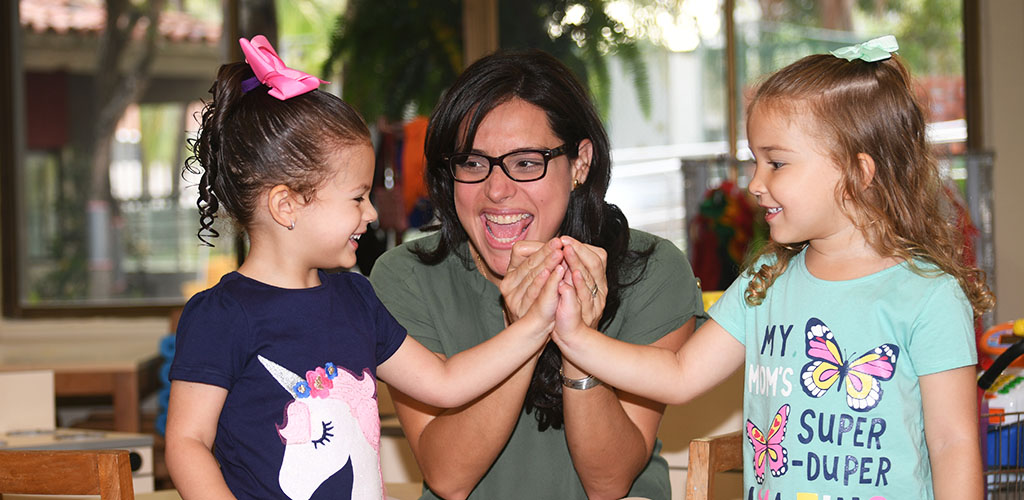
7 Random Acts of Kindness Ideas for Kids
By: Jaclyn Lindsey and Melissa Burmester
Jaclyn Lindsey and Melissa Burmester are the co-founders of Kindness.org, a nonprofit whose mission is to educate and inspire people to choose kindness through scientific research, education, and storytelling.
Kindness is a superpower kids can choose every day to make themselves and others feel good. Flag these ideas to prepare for Random Acts of Kindness Day on February 17.
“Be nice, and don’t be a bully.” Chances are your kids hear that all the time— at home, at school, or during their after-school activities. Instead of making kindness just another rule, what if we showed kids that it’s a superpower they can choose every day to make both themselves and others feel good?
Research shows that being kind increases happiness and well-being, and that kindness can lead to increases in peer acceptance. Here are 7 ideas for acts of kindness you can do with your child to help them grow confident in their abilities to impact the world around them.
1. Share a kind note
Words matter. What does your child have to say? Ask what kindness means to them and help them choose someone to surprise with a kind note. A new classmate, a friend, or a teacher’s aide are all great choices.
Your child’s note can be anything they want it to be, from a kind word on a piece of paper to a homemade card or letter you put in the mail together.
2. Demonstrate the power of encouragement
Grab some colorful sticky notes and pens. Ask your child to fill them with encouraging compliments like “You’re awesome”, “You can do this”, or “You’re a good friend.” Tell them you’re collecting them for someone special as a surprise.
When your child isn’t looking, add their name to the notes and hide them around the house for them to discover.
3. Pick up litter together
The next time you’re taking a walk with your child, collect a few items of litter together. It’s a great time to have a conversation about how each of us has the power to make the world around us more beautiful.
You can do this act of kindness in so many places—from the playground to the parking lot. While there are no guarantees, your child might just take a little more interest in keeping their toys from “littering” the carpet.
4. Find someone to thank
A kind word goes a long way. Wherever you go with your child, there is almost always someone you can thank for their help!
Encourage your child to say thanks to a teacher, a grocery store cashier, or someone holding the door for them. You can even make a game out of finding people to thank together.
5. Add gratitude to your evening routine
Asking your child what they are grateful for can be an eye-opening (and profound) experience. Try asking your child before bedtime what made them happy that day.
Kindness.org co-founder and chief strategist Melissa Burmester shares, “I’ve started doing this with my two-year-old and it’s become one of my favorite times of the day. Yesterday she was grateful for sunshine, fig bars, and Grandma. The day before that it was puddles to jump in.”
6. Play “I Spy Kindness”
Kindness is all around us if we start looking. Unexpected smiles. People helping strangers carry shopping bags. Someone who gives up their seat on the bus or train.
The more kind acts kids witness, the more ideas they’ll have for kind acts of their own! The next time you’re out running errands together, make a game out of spotting acts of kindness.
7. See something, do something
Kids pay attention and see more than we think. The next time your child asks a question about someone who is experiencing homelessness or about an issue on the news like immigration, do one small thing about it
together as a family.
Help your child give gently used clothing to a shelter for families, make a donation, or volunteer together.
Jaclyn Lindsey, CEO and co-founder of Kindness.org, reminds us that while children may have trouble understanding the complexity of these issues, by doing an act as a family you are empowering them to feel like they can help.
“As a mom to 9-month-old Abel, I hope when he’s old enough to perceive these challenges, my husband and I have led by example. We want him to instinctively treat all people with dignity, never jump to conclusions about someone because of their circumstances, and to never look down on someone unless he is helping them up.”
Every act, no matter how small, makes a difference. (That goes for you, too!) Help your child engage their kindness superpowers today!
Source: https://www.parents.com/parenting/better-parenting/advice/random-acts-of-kindness-ideas-for-kids/
Read More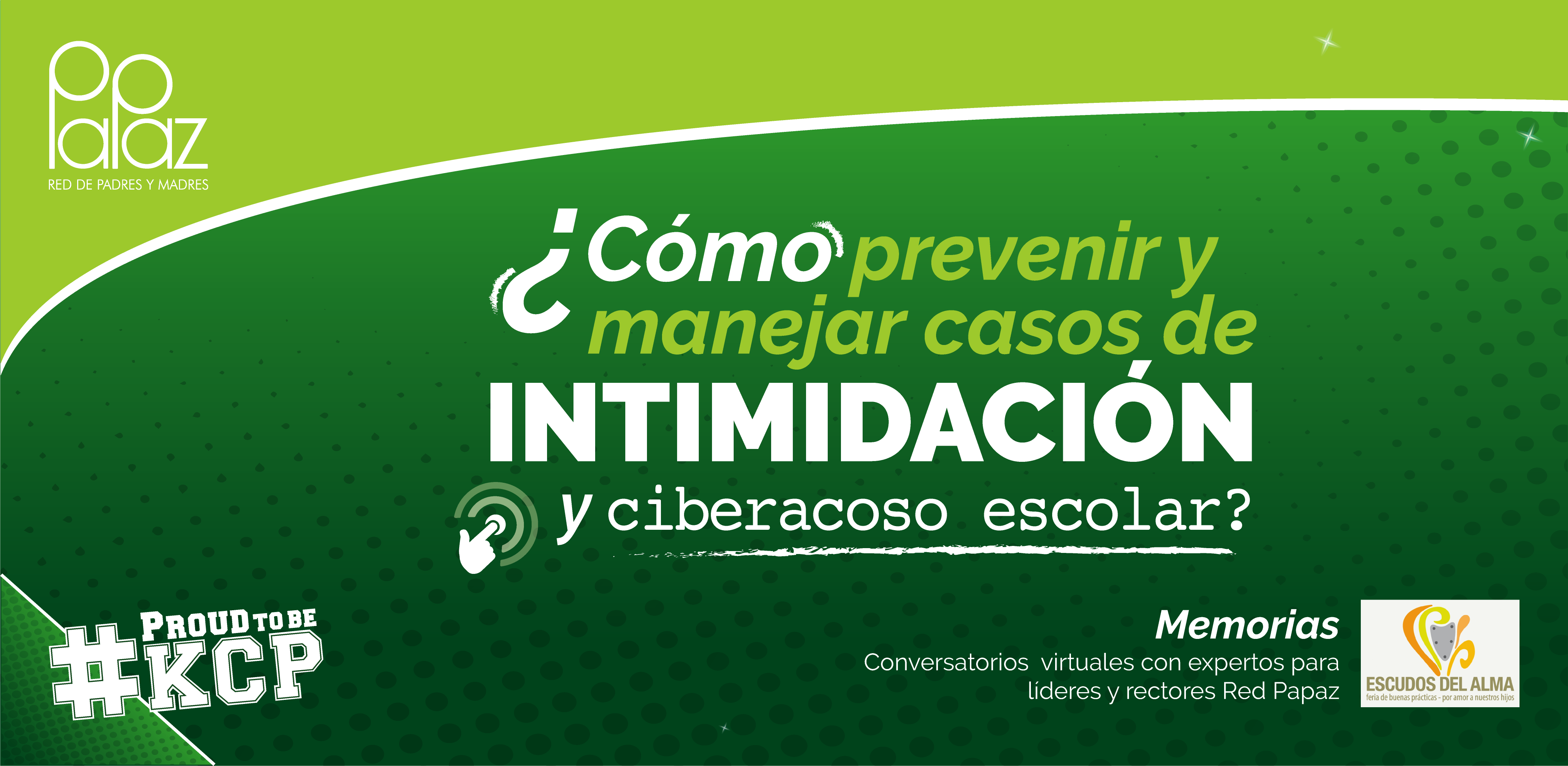
¿Cómo Prevenir y Manejar Casos de Intimidación y Ciberacoso Escolar?
Fuente: Red PaPaz
La intimidación escolar (acoso escolar o bullying) es una conducta negativa, intencional y sistemática por parte de uno o varios estudiantes o profesores contra un estudiante o un profesor, frente al cual hay un desbalance de poder. Por su parte, el ciberacoso es una situación de intimidación escolar que se ejerce a través de las TIC.
¿Qué debemos saber sobre estos riesgos para prevenirlos y manejarlos?
1. Actores involucrados
Víctima: La persona o personas que sufren las agresiones
Intimidador: La persona o personas que ejercen la intimidación y/o la agresión sobre la víctima
Espectador: La o las personas que presencian la situación
Es fundamental que los miembros de la comunidad educativa identifiquen oportunamente estas situaciones, implementen los protocolos o acciones de atención con el fin de asegurar el restablecimiento de los derechos y la protección de las personas involucradas, incluyendo a las que informan.
Estos eventos se deben aprovechar para generar conciencia acerca del rol que los miembros de la comunidad están llamados a cumplir en el mantenimiento de un buen clima escolar. La desaprobación colectiva de estas conductas, la búsqueda de estrategias para reparar los daños causados y el fomento de buenas relaciones, son algunos de los aspectos en los que el colegio y la familia deben trabajar activamente.
2. Situaciones en los entornos digitales
Las situaciones de intimidación escolar a través de la tecnología, pueden tener un impacto muy grande sobre la víctima si se considera el número de personas que pueden acceder a estos contenidos, así como el número de reproducciones que pueden hacerse. Por este motivo es necesario que madres, padres, cuidadores y docentes monitoreen el uso que sus hijos tienen de los dispositivos digitales.
Es importante que los adultos sigan las recomendaciones de los expertos respecto a las edades sugeridas para la exposición a pantallas, el acceso a redes sociales y el uso de teléfonos móviles por parte de niñas, niños y adolescentes. El monitoreo parental basado en la comunicación asertiva con los estudiantes permitirá prevenir e identificar situaciones que los afecten.
3. Lo que dice la ley
La normativa colombiana (Ley 1620 de 2013 y Decreto 1075 de 2015) establece los tipos de situaciones que afectan la convivencia escolar, según su nivel gravedad:
Tipo I: Conflictos manejados inadecuadamente y situaciones esporádicas que afectan negativamente el clima escolar. No generan daños al cuerpo o a la salud. En estos casos, el rector, docente, orientador o conciliador escolar deben reunir, inmediatamente a las partes, para que expongan sus puntos y busquen la forma de reparar los daños.
Tipo II: Pueden ser agresiones, situaciones de acoso y ciberacoso escolar, siempre que constituyan algunas de las siguientes características:
- Se presenten de manera repetida o sistemática, o
- Que causen daños al cuerpo o a la salud, sin generar incapacidad alguna para cualquiera de los involucrado
En estos casos, se debe asegurar la atención inmediata de los involucrados que comprende:
- Informar a los padres de los estudiantes involucrados
- En caso de daño al cuerpo se debe remitir a las entidades de la salud
- Involucrar al ICBF cuando sea indispensable, para adoptar medidas de restablecimiento de derechos
- Adoptar medidas de protección para las personas que informaron
- Determinar las medidas para el restablecimiento de los derechos
- Reunir al Comité Escolar de Convivencia para informar acerca de la situación y las medidas adoptadas, para verificar si la solución fue efectiva, y si hay acciones de prevención que se deban adoptar
- Reportar en los sistemas de información dispuestos por las autoridades
Tipo III: Situaciones que constituyan delitos de acuerdo con la ley colombiana. En estos casos debe ocurrir lo siguiente:
- El rector debe informar de manera inmediata a la Policía Nacional
- Se debe informar a los padres de los estudiantes involucrados
- En caso de daño al cuerpo de debe remitir a las entidades de la salud
- Reunir al Comité Escolar de Convivencia para informar acerca de la situación y las medidas adoptadas
- El Comité Escolar de Convivencia podrá adoptar medidas para proteger a las personas involucradas y a las que han informado.
- Reportar en los sistemas de información dispuestos por las autoridades
4. ¿Qué podemos hacer desde la Alianza Familia Colegio?
Los adultos tenemos la responsabilidad de hablar con niñas, niños y adolescentes, indagar si están involucrados en situaciones de intimidación escolar y/o ciberacoso, e identificar si actúan como observadores, víctimas o intimidadores. Es importante ayudarlos a identificar los roles que podrían ejercer, cómo evitar estas situaciones, cómo poner límites y cómo asumirlas en caso de estar implicados.
Para esto, recomendamos:
- Dar ejemplo, siempre ser conscientes de que hijos y estudiantes aprenden de nuestros comportamientos y conductas
- Hacer un gran esfuerzo por desnaturalizar conductas agresivas. La agresión no es justificable en ninguna circunstancia
- Reflexionar siempre, ojalá en voz alta, sobre las posibles consecuencias de nuestros actos en los otros
- Cualquier situación, por dolorosa que sea, es una oportunidad de aprendizaje
- Reparar los daños y restablecer los derechos debe ser el foco.
- Reportar situaciones de intimidación escolar y ciberacoso en www.teprotejo.org o el App Te Protejo
Lo invitamos a ampliar esta información en nuestro conversatorio virtual “Prevención de intimidación Escolar y Ciberacoso” a cargo de José Fernando Mejía y Andrés Vélez
Recomendaciones de la Academia Americana de Pediatría sobre las edades en las que niñas, niños y adolescentes puedes acceder a los dispositivos digitales:
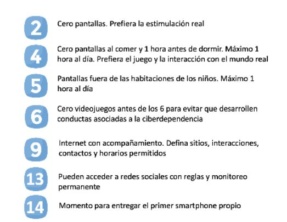

Developing Character and Responsibility in Your Teen
By: Dr. Jim Burns
One of the ironies of parenting is that we have to give our kids freedom to fail in order for them to grow up. If you over-parent your teenager, your actions are shouting to her that you don’t believe she can succeed by herself. We must go through the process of releasing control over our teens so they can move toward responsibility. A person who never learns to take full responsibility for their own life and actions will never have the chance to develop healthy character, or to be fully alive, and happy.
4 Steps to Responsibility
Foster Cline, in his excellent book, Parenting Teens with Love and Logic, offers four steps toward teaching your teens to become responsible.
Step 1: Give your teen responsibility
Step 2: Trust that your child will carry it out.
Step 3: When she does blow it, stand back and allow consequences to occur while expressing empathy.
Step 4: Turn right back around and give her the same responsibility all over again because it sends a powerful implied message: “You’re so smart that you can learn. People do learn from their mistakes and you’re no different.”4
The more parents can offer empathy for their kids’ mistakes the better.
For example, when grades are suffering, the appropriate response is something like this: “I hope you will be able to figure out how to pay the extra money for your car insurance until your good student discount kicks back in when you improve your grades.”
Part of teaching responsibility and character is holding your kids accountable for their actions. That’s why it’s important to express your expectations. The fewer surprises the better. Again, remember that often the most valuable lessons in life come from the consequences of making a mistake. Let reality be the teacher.
Expectations and the Family Contract
In some families a teen will live with clear expectations and consequences but still choose a path of unhealthy rebellion and misbehavior.
If healthy and consistent discipline isn’t working, it’s time to put together a family contract. A family contract involves writing a plan with expectations and consequences for behavior. It is always best to create the contract together with your teen and never in the heat of the battle. When putting together a contract, keep it as simple as possible. Here is a simple outline to follow:
Issue
Expectations
Accountability
Positive Consequences
Negative Consequences
These five questions (and sample answers) can help:
What is the issue? (Lack of discipline with homework.)
What is a reasonable expectation? (Complete homework in a timely manner.)
How can we hold you accountable? (Daily homework check- in with one parent at an agreed-upon time.)
What are the rewards for a job well done? (a sense of accomplishment, feeling good about myself, college preparation, and perhaps buying a new outfit or celebrating with the family at a ball game)
What are the consequences if you do not meet the expectations? (unable to go to a four-year college right out of high school, poor grades, and costly car insurance as well as immediate consequences, such as no texting or social media until the homework is done, suspended driving privileges, or suspended sports activities).
Parents sometimes need a family contract. Shame-based parenting never works in the long haul. And preaching, criticizing, and yelling are never effective motivators—they will close your child’s spirit toward you. With a contract, however, teens learn to discipline themselves and become more responsible.
The Bottom Line
The bottom line in building character and responsibility is that there is hope. Even if you are in the pit of adolescent hormones, drama, and rebellion, know that most teens do make it through this stage and do just fine. Adolescence is a phase between childhood and adulthood. The truth to hold onto is that teens can be rude, selfish, and rebellious and still become responsible adults that one day you can laugh with about those transition years.
Teens can make poor choices and experiment with poor behavior and still grow up okay. Too many parents are emotional wrecks because they are carrying the weight of their children’s behavior on their back.
No matter how good of a parent you are, your child is quite capable of making poor choices and horrible decisions. Proper discipline does not guarantee proper behavior. However, if you develop and carry out a healthy parenting plan while getting as emotionally, spiritually, and physically healthy as possible yourself, you and your teen will have a much better chance of leading healthy, fulfilling lives.
Source: http://tiny.cc/xt6qdz
Read More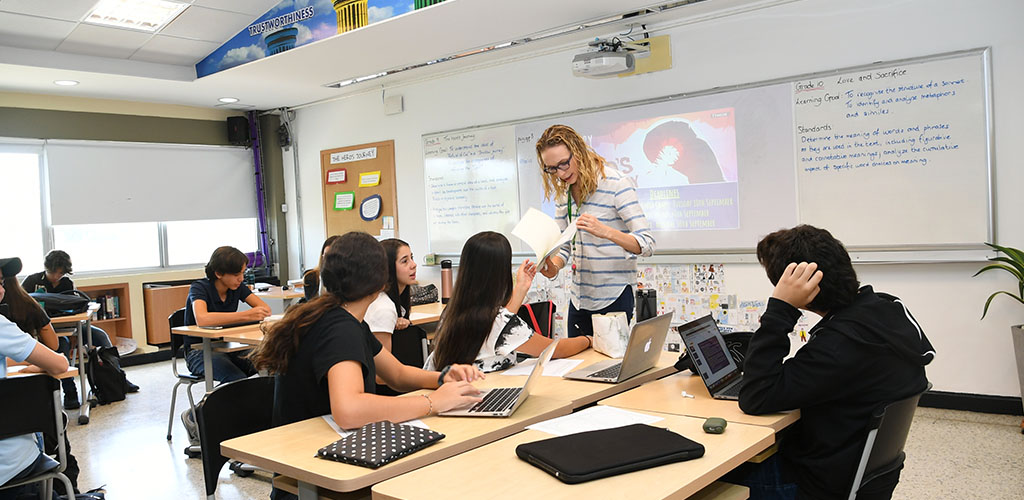
MIT Learning Professor: 10 Ways Parents Can Encourage Creativity in Their Kids
By: Jessica StillmanContributor, Inc.com @EntryLevelRebel
Kids are naturally creative. Here’s how to keep school and society from dimming that spark.
Across America, kids have headed back to school over the last couple of weeks. They’re settling into classroom life and getting to know their teachers and schoolmates. And unfortunately, for many kids, they’re also already starting to feel the creativity-dulling effects of our education system.
It’s not that most educators aren’t dedicated to the best outcomes for students, of course. But according to Mitchel Resnick, professor of learning research at MIT and head of the Lifelong Kindergarten group at the MIT Media Lab, the way we teach kids often has the unfortunate side effect of snuffing out their natural instinct to create and problem solve.
The most important skill for an uncertain future is creativity.
The endless parade of flashcards and worksheets that fills up many school days might stuff facts into kids’ heads and prepare them for tests, but it doesn’t teach them to put that knowledge to use in new ways. In fact, this kind of rote learning can dull children’s drive to solve problems and create.
“Often in traditional schooling, the view is that we have to learn the skills and concepts before working on projects. You have to learn the basics first and then you can apply them. I think that’s misguided because you end up learning a lot of disconnected facts and skills, and then you’re not able to make use of it in a meaningful way,” Resnick explained in an interview with EdSurge.
In our fast-changing world kids need not just to know stuff, but to have the confidence to apply that knowledge to new situations. We can’t prepare our kids for the future because we don’t know what it will look like. All we can do is help them develop the tools to adapt to whatever the world throws at them.
-
Show examples. “A blank page, a blank canvas, and a blank screen can be intimidating. A collection of examples can help spark the imagination,” Resnick says. It’s OK if kids just copy these examples to start, but “encourage them to change or modify the examples. Suggest that they insert their own voice or add their own personal touch.”
-
Encourage messing around: “Most people assume that imagination takes place in the head, but the hands are just as important,” Resnick writes. “As children play with LEGO bricks or tinker with craft materials, new ideas emerge. What started as an aimless activity becomes the beginning of an extended project.”
-
Provide a wide variety of materials. “Children are deeply influenced by the toys, tools, and materials in the world around them. To engage children in creative activities, make sure they have access to a broad diversity of materials for drawing, building, and crafting,” he says. Pipe cleaners are just as valuable as a fancy new robotics kit.
-
Embrace all types of making. “Help children find the type of making that resonates for them,” advises Resnick. Whether it’s building with bricks, writing a poem, baking a cake, or creating computer animations, it’s all good.
-
Emphasize process, not product. “As children work on projects, highlight the process, not just the final product. Ask children about their strategies and their sources of inspiration. Encourage experimentation by honoring failed experiments as much as successful ones. Allocate times for children to share the intermediate stages of their projects and discuss what they plan to do next and why,” he instructs.
-
Extend time for projects. Don’t try to squeeze projects into short, fixed time periods. “It discourages risk taking and experimentation, and it puts a priority on efficiently getting to the ‘right’ answer within the allotted time,” Resnick cautions. Set aside bigger blocks of time for creating as best you can based on the constraints of your schedule.
-
Play matchmaker. Collaboration is a key part of creativity. It’s your job to facilitate it: “You can play the role of matchmaker, helping children find others to work with, whether in the physical world or the online world.”
-
Be a collaborator. “Parents and mentors sometimes get too involved in children’s creative projects, telling children what to do or grabbing the keyboard to show them how to fix a problem. Other parents and mentors don’t get involved at all. There is a sweet spot in between, where adults and children form true collaborations,” Resnick believes.
-
Ask (authentic) questions. “It’s great for children to immerse themselves in projects, but it’s also important for them to step back to reflect on what’s happening. You can encourage children to reflect by asking them questions about their projects,” Resnick says. Examples include: “How did you come up with the idea for this project?” or “What’s been most surprising to you?”
-
Share your own reflections. Share your own creative process, warts and all. “Most parents and teachers are reluctant to talk with children about their own thinking processes,” Resnick says. “But talking with children about your own thinking process is the best gift you could give them. It’s important for children to know that thinking is hard work for everyone — for adults as well as children.”
